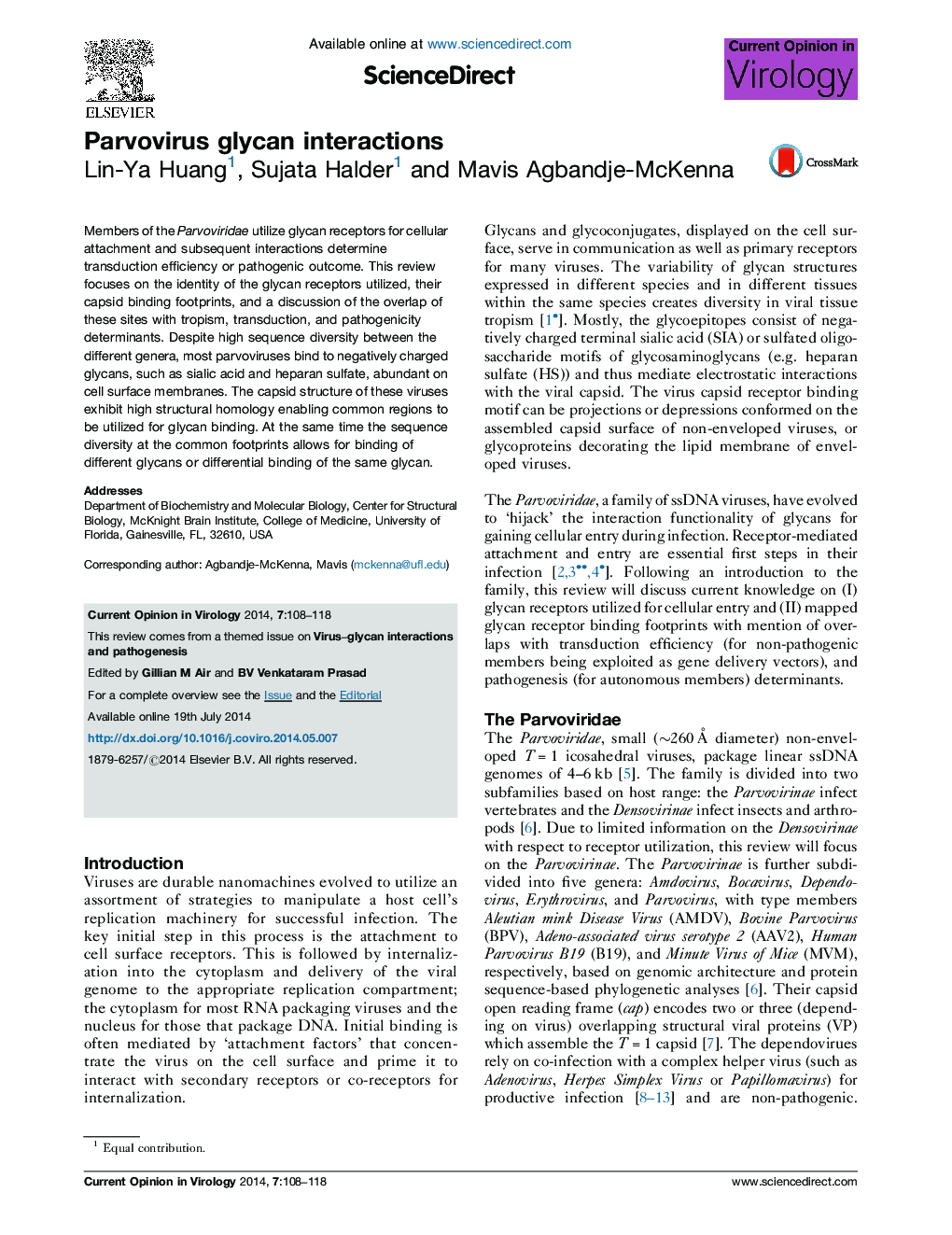| Article ID | Journal | Published Year | Pages | File Type |
|---|---|---|---|---|
| 2473298 | Current Opinion in Virology | 2014 | 11 Pages |
•Glycan interactions are an essential first step in successful host infection by the Parvovirinae subfamily of the Parvoviridae.•The binding sites for glycans overlap with determinants of transduction efficiency and pathogenicity for non-pathogenic and pathogenic members, respectively.•The Parvovirinae exhibit commonality in the glycans recognized across genera and they utilize common capsid regions for binding to disparate glycans.•Identifies capsid regions that can inform engineering efforts for tissue targeted gene delivery therapies or development of viral infection inhibitors.
Members of the Parvoviridae utilize glycan receptors for cellular attachment and subsequent interactions determine transduction efficiency or pathogenic outcome. This review focuses on the identity of the glycan receptors utilized, their capsid binding footprints, and a discussion of the overlap of these sites with tropism, transduction, and pathogenicity determinants. Despite high sequence diversity between the different genera, most parvoviruses bind to negatively charged glycans, such as sialic acid and heparan sulfate, abundant on cell surface membranes. The capsid structure of these viruses exhibit high structural homology enabling common regions to be utilized for glycan binding. At the same time the sequence diversity at the common footprints allows for binding of different glycans or differential binding of the same glycan.
